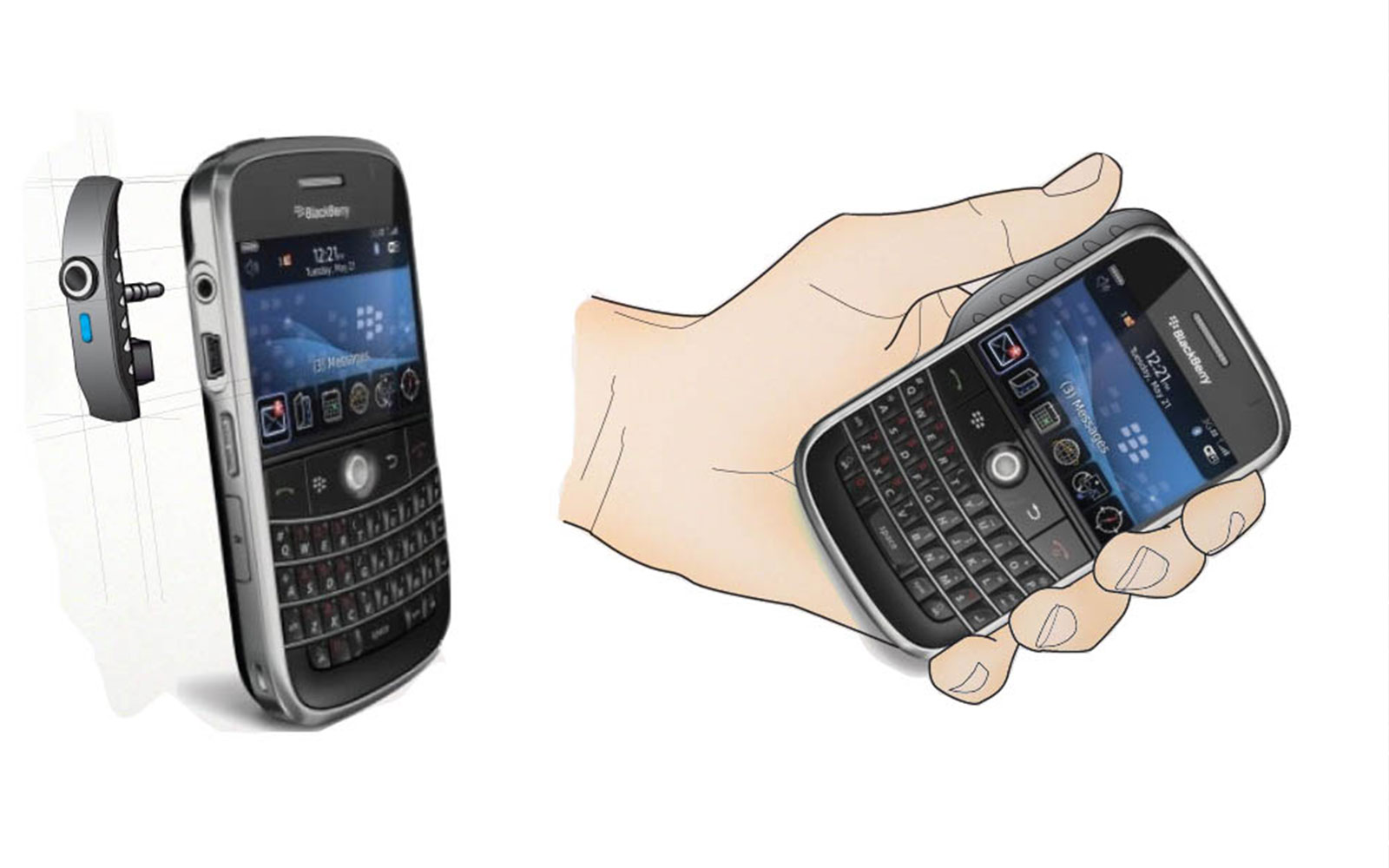Alternative View (RIM)
Smartphones are mobile phones that offer advanced capabilities. They are becoming more widespread and offer such features as email capability, music players, web browsing and fast data transfer. However they typically rely on the user having good vision to access even their most basic features. There is also a growing trend towards touch-screen devices, which offer little or no feedback to indicate when an onscreen icon is pressed. This has implications for the 161 million people worldwide who are visually impaired.
This Helen Hamlyn Centre design project in collaboration with RIM aimed to study how people with low vision use mobiles in order to create new designs based on their communication needs and aspirations. The idea was to look at how smartphones could adapt to new forms of interaction that include rather than exclude low vision communities. Although visually impaired people formed the lead user group, the intention was also to develop solutions applicable to the mainstream.
Most people with low vision can actually see something. Only a small minority see total darkness. The design concepts developed aim to utilise the sight that people do have and supplement this with other sensory input. Sight, Sound and Touch formed the broad headings under which solutions were grouped. The first, entitled Sense Profile, comprised an Audio Slider, Visual Slider and Tactile Slider on the phone screen. Moving the Visual Slider up, for example, progressively makes the font size bigger, icons larger and contrast greater, removing the need to change multiple settings from within a complicated menu structure. This allows the smartphone to adapt to an individual's needs at the touch of a button.
The research strategy involved comparing and contrasting the behaviour and attitudes of blind and visually impaired people at opposite ends of the age spectrum. A 'day in the life' observation of three individuals from each age group captured insights. This was followed by group workshops. What emerged was a framework of needs for each age group. These were translated into design concepts which were prototyped and then developed iteratively with real users. All these ideas aim to make the digital experience more inclusive of visual impairment, but importantly, they also represent new ways for fully sighted people to interact with smartphones.

